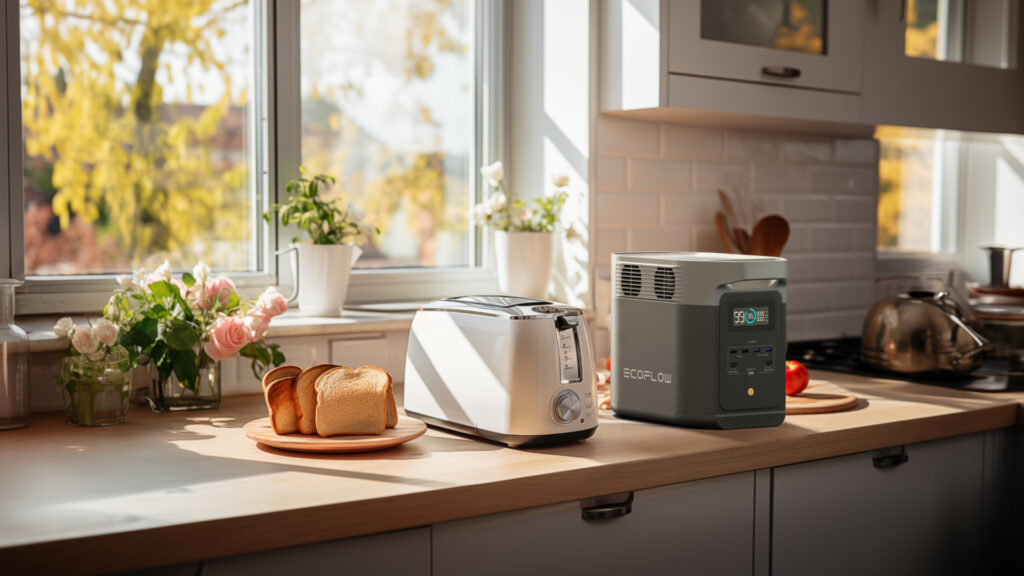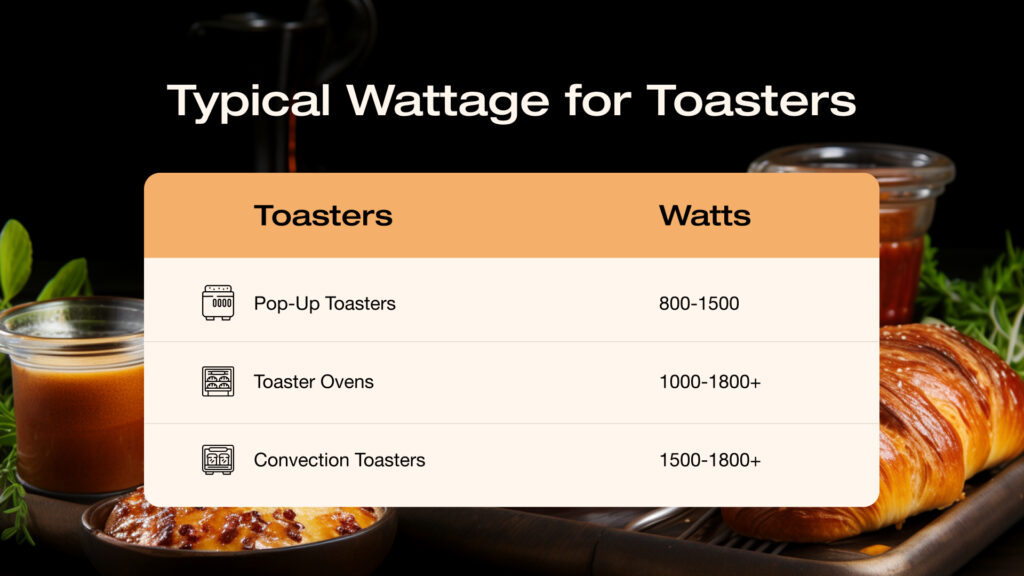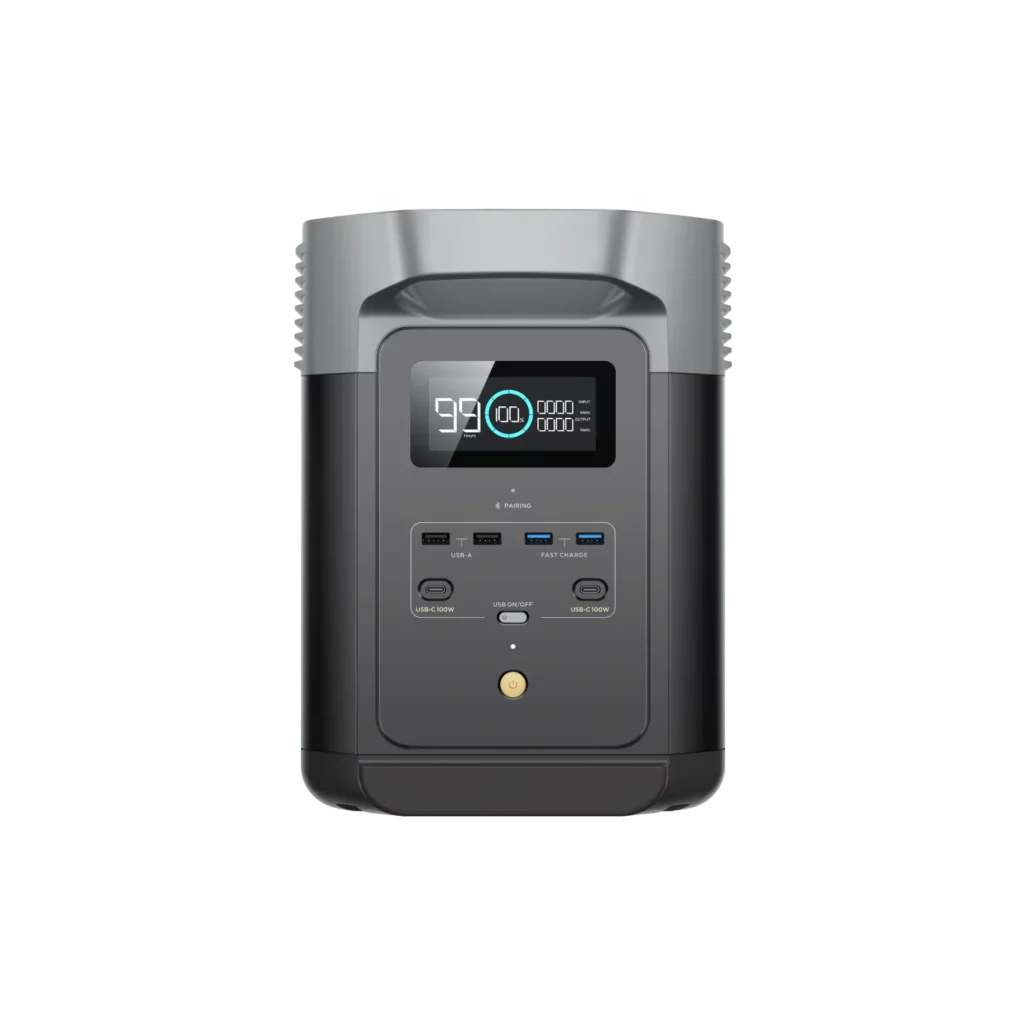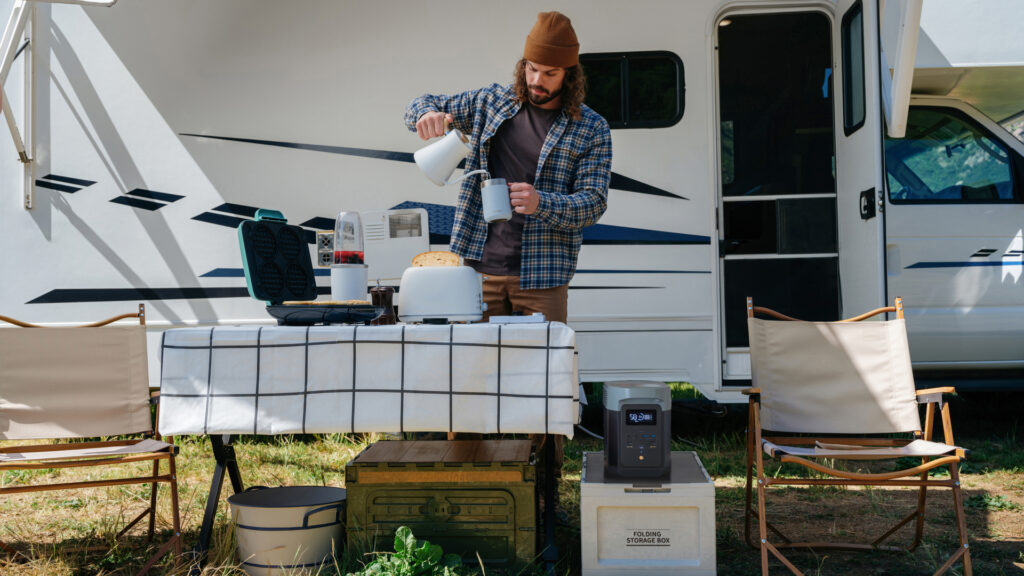Table of Contents
Toasters are a kitchen staple in most homes, but did you know these small appliances can use a surprising amount of electricity? The average toaster ranges from 800-1500 watts depending on the type and features. With Americans using their toasters over 3 billion times per year, all that toast can add up to your energy bill!
In this article, we’ll cover how much power different kinds of toasters use and what factors affect it. You’ll learn how to evaluate your needs and find an energy-efficient toaster that’s just right for your household. We’ll also review some top-rated low-wattage models in different categories. Let’s shed some light on the toaster power trap and find the perfect fit for you!

Typical Wattage for Different Types of Toasters
There are three main types of toasters, each with a range of typical wattages:
Pop-Up Toasters
The classic pop-up toaster with slots is the most common type you’ll find. These typically range from 800-1500 watts. Basic 2-slice models are on the lower end while 4-slice and commercial-style toasters need more power.
Toaster Ovens
Toaster ovens are small countertop ovens with toast slots built in. They have more capabilities than pop-up toasters, but use more electricity – usually 1000-1800+ watts. Larger capacity ovens with convection fans use even more power.
Convection Toasters
Higher-end convection toasters have built-in fans to circulate hot air and toast more evenly. The fan requires extra power, so these models can use 1500-1800+ watts. They take up more counter space as well.
As you can see, wattages cover a wide range depending on features and capacity. So what makes some toasters use more electricity than others?

Factors That Affect a Toaster’s Power Use
Several key factors determine how many watts a toaster will draw:
Number and Type of Heating Elements
More heating elements allow multiple slots/functions but use more power. Quartz elements require less wattage than metal alloy ones.
Extra Features Like Convection or Broilers
Fans, broilers, and other bonus features use extra electricity. Convection, as mentioned, can add a few hundred watts.
Size and Slice Capacity
In general, larger slots and higher-capacity ovens need more wattage to heat efficiently. Bigger isn’t always better!
Considering these design factors will help narrow your search when selecting an energy-efficient model. Prioritize what features you really need versus want.
How to Evaluate Your Power Needs
When deciding on a toaster for your home, take these factors into account:
Household Size and Usage
How many people will use it regularly? Occasional solo toasts versus daily family breakfasts call for different capacities.
What You’ll Be Toasting
Will you just toast bread? Or also waffles, bagels, and oven dishes? Look for multi-functionality if needed.
Consider EcoFlow DELTA 2 for Off-Grid Power
For eco-friendly homes that want to cut back on their energy use, the EcoFlow DELTA 2 portable power station is a great off-grid power source for counter appliances like toasters. With its 1,800W AC output and 1,024Wh lithium iron phosphate battery capacity, it can handle any toaster with no problem.
The EcoFlow DELTA 2 has this new X-Boost tech that lets it recharge from 0 to 80% in just 50 minutes. So you’ll never be without your morning toast! And since it’s portable with different power outlets, you can use appliances cord-free anywhere. Getting the EcoFlow DELTA 2 is a smart way to lower your home’s energy consumption, I’d say. The EcoFlow DELTA 2 lets you take power anywhere – like if you go camping or the electricity goes out, you’ll still be able to make toast thanks to the battery and speedy charging. I’d say it’s great for eco-friendly lifestyles and homes trying to cut down on their energy use. So yeah, the EcoFlow DELTA 2 is awesome for off-grid toaster power!

Reviews of Efficient Toaster Models
Now let’s look at some top-rated energy-efficient toaster models in different categories:
Top Low-Wattage Pop-Up Toasters
- The Oster 2-Slice Toaster only uses 700W, so it’s a basic pop-up toaster that uses minimal electricity. It has 7 shade settings and options for defrosting, bagels, and canceling toasting, all at a budget price.
- The Breville the Bit More has some extra smart features but still only uses 1100W. This roomy 4-slice toaster has an auto-lift function and keep warm feature. It has a bit more power than a standard basic toaster.
Best Value Toaster Ovens
- The Panasonic FlashXpress uses 1300W and is compact in size. This versatile toaster oven is great for small households. It saves energy by using quick infrared heating and has presets for toast, pizza, and more.
- The Cuisinart Chef’s Convection Toaster Oven uses 1525W. This convection oven efficiently circulates air to cook dishes faster. It has a large 25L capacity but a counter-friendly size.
Eco-Friendly High-End Options
- The Dualit Eco Energy Efficiency Toaster uses 30% less energy than normal while still making great toast. Its sleek steel body and replaceable heating elements are designed for efficiency and longevity. Worth the spend if you want an eco-friendly premium toaster!
- The Zero Emissions Toaster Oven uses focused infrared heat for 75% more energy savings and nearly zero emissions. It’s pricey but awesome for eco-conscious folks.
Conclusion and Recommendations
Finding an energy-efficient toaster is about balancing your household’s needs with some smart design considerations. Look for the right size and features you actually require – extra capacity and stuff you don’t need can just add unnecessary costs over time. Investing in high-quality models like convection toasters and infrared ovens that save energy is a good move. For an eco-friendly power source, the portable EcoFlow DELTA 2 gives you off-grid power for toasters and any counter appliances.
To make the best choice for your home, take a look at how you’ll use your toaster. Figure out the must-have features versus the nice-to-have extras. With the right research and reviews, you can find energy-saving toaster options perfectly tailored to your lifestyle. Just remember – you can get your dream toast without putting extra strain on your energy bill or the environment!

Frequently Asked Questions
What wattage is best for a 2-person household?
For a smaller 2-person household, a toaster with 1000-1200 watts is ideal. Go for high-quality 2-slice pop-up toasters or compact toaster ovens. The Oster 2-slice and Panasonic FlashXpress are great picks that won’t waste energy.
Do convection toasters use more electricity?
Yep, the internal convection fan needs more power, usually around 1500-1800 watts for convection toasters. But they use energy more efficiently overall by distributing heat evenly with less preheating time.
Can the EcoFlow DELTA 2 power a toaster oven off-grid?
Absolutely! With 1800 watts of continuous AC power from its 1024Wh battery capacity, the EcoFlow DELTA 2 can easily power any pop-up or full-size toaster oven off-grid. It’s a perfect eco-friendly power solution.
Should I look for plastic or metal when buying an energy-efficient toaster?
Metal toasters retain heat better and use less energy once warmed up. However, plastic toasters are safer, better insulated, and weigh less. For maximum efficiency, look for a stainless steel or aluminum-body toaster.
Do more toasting slots use more electricity?
Yes, generally the more slots and functions a toaster has, the more electricity it will require, as there are more heating elements. Prioritize what features you really need based on your household habits.
